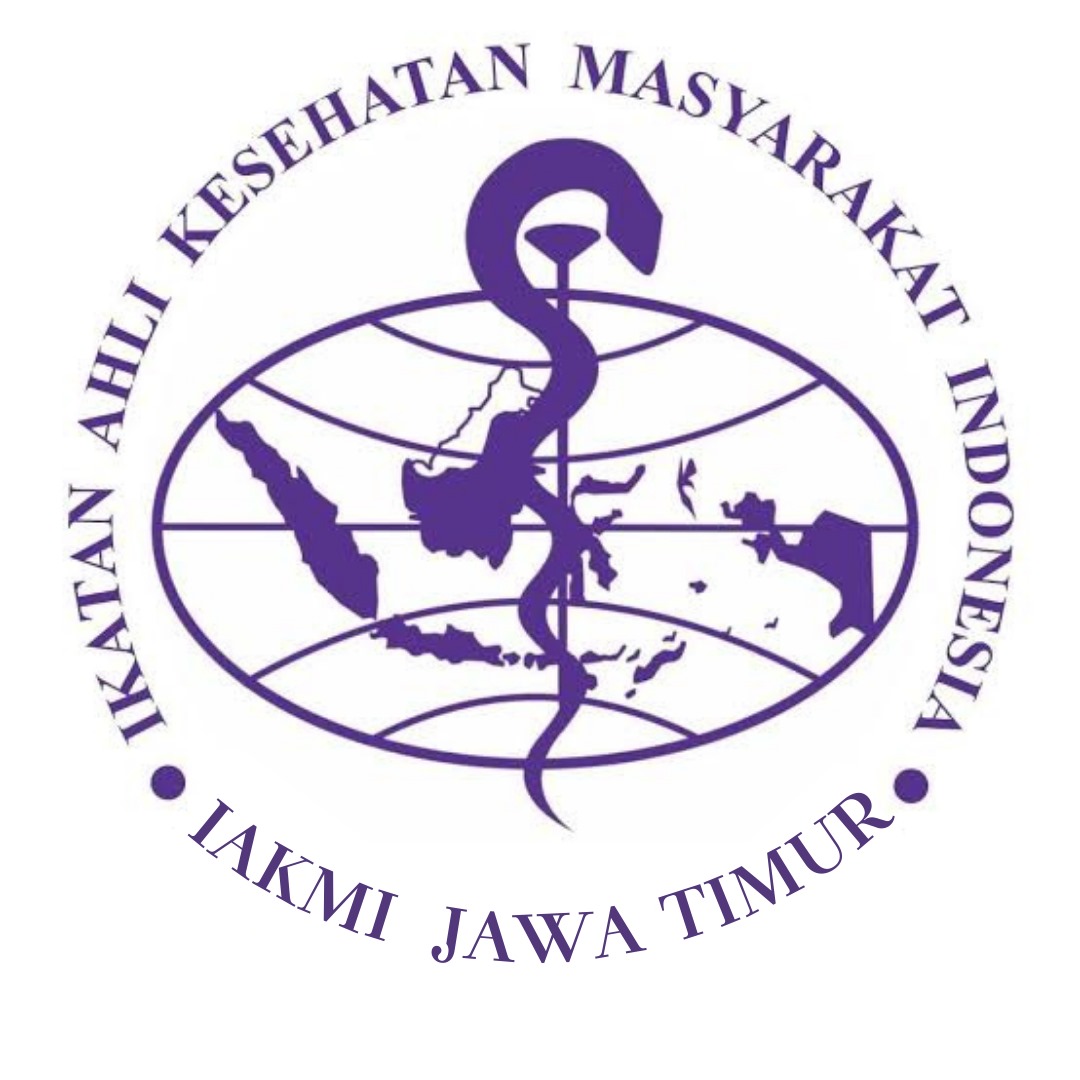Analysis of the Relationship between Contact Dermatitis and Work Tenure, as well as Atopic History Among Hand-Rolled Cigarette Factory Workers (MPS KUD Tani Mulyo Lamongan)

Downloads
Background:Contact dermatitis is a skin inflammation caused by exposure to irritants or allergens, often associated with occupational exposure. Its causes include endogenous factors, such as genetics and atopic history, as well as exogenous factors, such as chemical properties and exposure duration. This condition has a high global prevalence, particularly in tropical regions. In Indonesia, dermatitis ranks third among the top ten skin diseases, with most cases being work-related. Contact dermatitis is classified into Irritant Contact Dermatitis (ICD) and Allergic Contact Dermatitis (ACD), with risk factors including exposure duration, use of Personal Protective Equipment (PPE), and history of skin diseases. High-risk industries include manufacturing, construction, and printing.
Objective: Analyzing the factors of work duration and history of atopy that contribute to the risk of contact dermatitis among workers at the hand-rolled cigarette factory Mitra Produksi Sigaret Koperasi Unit Desa (MPS KUD) Tani Mulyo, Lamongan.
Method: The study is an analytical research with a cross-sectional study design. Bivariate analysis was conducted using the chi-square test and the Mann-Whitney U test. The sampling technique used was total sampling, with the study population consisting of all production workers at a hand-rolled cigarette factory in Turi District, Lamongan Regency, in 2022. The total sample size was 81 participants. The analysis instruments used included questionnaires, medical examination sheets, and observation sheets.
Results:The results of this analysis show that 49 individuals (60.5%) experienced contact dermatitis among hand-rolled cigarette production workers, with the most common cause being endogenous factors related to individual susceptibility. The analysis also demonstrates that the variables significantly associated with contact dermatitis are a history of atopy (p=0.000) and length of employment (p=0.000).
Conclusions: This analysis proves that there is a significant association between atopy history and length of service with the incidence of contact dermatitis in workers at MPS KUD Tani Mulyo. These findings emphasise the need for special prevention and protection efforts for high-risk workers, especially those with a history of atopy and a long working life.
Achisna, R., & F. S. (2020). Hubungan Faktor Risiko Dermatitis Kontak pada Petani. Jurnal Kesehatan, 11(1), pp. 101-107.
Astono, S., Sudidan Sudarja, & Herliani. (2002). Penyakit Kulit di Kalangan Tenaga Kerja Industri Plywood di Propinsi Kalimantan Selatan. Program Pasca Sarjana Hiperkes Medik Fakultas Kedokteran Universitas Indonesia, Jakarta. Cermin Dunia Kedokteran, No. 136.
Badan Pusat Statistik (2021) Kecamatan Turi Dalam Angka 2021.
Badan Pusat Statistik (2022) Kecamatan Turi Dalam angka 2022.
Darwadi, S. E. (2017). Hubungan antara Kontak Pupuk Urea aengan Dermatitis pada Petani di Desa. 58-65.
Dewi, K. (2017). Faktor Risiko Kejadian Dermatitis Kontak Akibat Kerja pada Pekerja Batik Tradisional di Daerah Istimewa Yogyakarta. Program Pascasarjana, Universitas Gadjah Mada Yogyakarta.
Djuanda A, Suriadiredja ASD, Sudharmono A, Wiryadi BE, Kurniati DD, et al., (2016). Ilmu Penyakit Kulit dan kelamin . Jakarta: Fakultas Kedokteran Universitas Indonesia
Efrilia, W., Widiawati, S., & Pradnyawati, L. G. (2024). Hubungan Riwayat Atopi dengan Kejadian Dermatitis Kontak Akibat Kerja pada Pekerja Batik di Denpasar Barat. Aesculapius Medical Journal, 4(2), pp. 287-292.
Hadi, R. P. (2021). Hubungan Faktor Risiko Kejadian Dermatitis Kontak pada Tangan Pekerja Bengkel Motor di Kecamatan Plaju. Scientific Journal of Occupational Safety & Health, 1, pp. 13-27.
Hari Suryo Utomo, & Lestari, F. (2007). Faktor-Faktor yang berhubungan dengan Dermatitis Kontak pada Pekerja di PT Inti Pantja Press Industri. Makara, Kesehatan, 11(2), pp. 61-68.
Hernanda Arie Nurfitria, S. S. (2020). Determinant Factor Of Pulmonary Function Impairment On Rice Mill Workers. Jurnal Kesehatan Lingkungan, 12(2), pp. 262-269.
Indriani, F. (2010). Pengaruh Riwayat Atopik terhadap imbulnya Dermatitis Kontak Iritan di Perusahaan Batik Putra Laweyan Surakarta. Skripsi, Fakultas Kedokteran Universitas Muhammadiyah Surakarta.
John, S. C. (1998). A Color Handbook of Occupational Dermatology. Manson Publishing.
Keefner, D. M., & Curry, C. E. (2004). Contact dermatitis. Handbook of Nonprescription Drugs, 12th Edition (pp. 145-155). APHA, Washington D.C.
Landman, G., Farmer, E. R., & Hood, A. F. (1990). The pathophysiology of irritant contact dermatitis. In Irritant Contact Dermatitis, 14(1), pp. 67-77.
Mei, A. P. (2019). Risiko Penyakit Kulit Akibat Kerja di Perusahaan Perkebunan dan Pengolahan Karet. Jurnal Kesehatan, 10(2), pp. 39-46.
Nindya Kurnia Aprinita, K. C. (2017). Faktor-Faktor yang Berhubungan dengan Perilaku Penggunaan Alat Pelindung Diri (APD) pada Karyawan Pabrik Rokok Praoe Lajar di Semarang. Jurnal Kesehatan Masyarakat (e-Journal), 5(2), pp. 1054-1062.
Pratiwi, D. Y., & Pramuningtyas, R. K. (2018). Hubungan Pengaruh Riwayat Atopik terhadap Tingkat Keparahan Dermatitis Kontak Akibat Kerja (DKAK) pada Pekerja Batik di Laweyan, Surakarta. Skripsi, Fakultas Kedokteran, Universitas Muhammadiyah Surakarta.
Rahmatika, A. (2020). Hubungan Faktor Risiko Dermatitis Kontak pada Petani. Jurnal Kesehatan, 11(3), pp. 101-107.
Viter, N. P., Bertus, H. E. (2015). Profil Dermatofitosis di Poliklinik Kulit dan Kelamin RSUP Prof. Dr. R. D. Kandou Manado periode Januari - Desember 2012. Jurnal e-Clinic (eCl), 3(1), pp. 731-734.
Wijaya, I. P. G. I. (2016). Edukasi dan Penatalaksanaan Dermatitis Kontak Iritan Kronis di RSUP Sanglah Denpasar Bali tahun 2014/2015. E-Jurnal Medika, 5(1), pp. 6-3.
Wijaya, I. P. G. I., & Sanglah, R. S. (2016). Edukasi dan Penatalaksanaan Dermatitis Kontak Iritan Kronis di RSUP Sanglah Denpasar Bali Tahun 2014/2015. E-Jurnal Medika, 5(6), pp. 3-6.
Copyright (c) 2024 Novrian Agung

This work is licensed under a Creative Commons Attribution-ShareAlike 4.0 International License.
Media Gizi Kesmas by Unair is licensed under a Creative Commons Attribution-ShareAlike 4.0 International License.
1. The journal allows the author(s) to hold the copyright and to retain the publishing right of the article without restrictions.
2. The legal formal aspect of journal publication accessibility refers to Creative Commons Attribution-Share-Alike (CC BY-SA).
3. The Creative Commons Attribution-Share-Alike (CC BY-SA) license allows re-distribution and re-use of a licensed work on the conditions that the creator is appropriately credited and that any derivative work is made available under "the same, similar or a compatible license”. Other than the conditions mentioned above, the editorial board is not responsible for copyright violations.



















